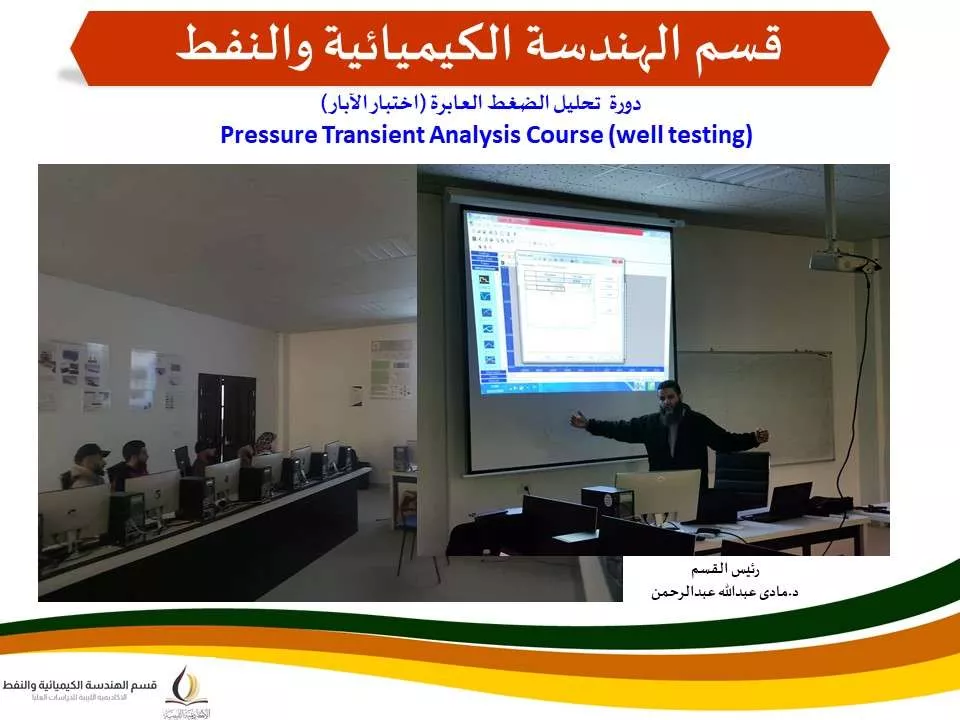دورة تحليل الضغط العابرة (اختبار الآبار) Pressure Transient Analysis Course (Well Testing)
دورة تحليل الضغط العابرة (اختبار الآبار)
Pressure Transient Analysis Course (Well Testing)
للوصـــــــــول الى اهداف القسم وتـدعيـم الطالب بمهارة التطوير في صناعة النفط والغاز من خلال النمذجة والمحاكاة، والاستفادة من خبرة الأساتذة العاملين بالقطاع لحل المشاكل وتحسين الإنتاج، وتقليل المخاطر، وتحسين الكفاءة العامة للعمليات.
تم بفضل الله وحمده الانتهاء من الدورة التدريبية بعنوان " دورة تحليل الضغط العابرة (اختبار الآبار)” باستخدام ببرنامج من اقوى البرامج المستخدمة في قطاع النفط والغاز باسم (Ecrin Software) لطلبة مقرر تحليل اختبار آبار النفط (Oil Well Test Analysis) بمعمل الحاسوب والمحاكاة بمدرسة العلوم التطبيقية والهندسية للمدرب أ. الأمين محمد جندلية من شركة الواحة للنفط.كما يتقدم مجلس القسم للاستاد أ. الأمين محمد جندلية بالشكر على هذه البادره الرائعه و على المجهود الذي قدمه وجعله الله في ميزان أعماله فلك جزيل الشكر والامتنان.
رئيس القسم
د.مادى عبدالله عبدالرحمن
Course Description:
This course introduces the purpose or desire of conducting well testing including the basic methodology. The theory and fundamental equations, as well as various understanding analytical solution are covered before introducing specific analysis techniques for homogeneous oil and gas reservoir. Non –homogeneous reservoirs and more advanced topics are also covered.
Course Outline:
Including but not limited to:
· Fundamental concepts.
· Well data analysis and oil well testing.
· Hydraulically fractured wells.
· Dual porosity models.
· Gas well testing.
Learning Objectives:
Can be divided into three segments:
A-Reservoir Evaluation:
· Determine if the formation has sufficient flow capacity to complete the well.
· Obtain reservoir information for predicting and analyzing reservoir behavior.
b- Reservoir Management:
· Diagnose the condition of production and injection wells to optimize well performance.
· To identify candidates for workover or stimulation
· To track the movement of fluid fronts within the reservoir
c- Reservoir description:
· Heterogeneities such as different rock types, stratigraphic interface, faults, and barriers may influence the pressure transient behavior to a measurable extent.
· There is a limit to the level of detail that can be achieved in a reservoir description.
· Pressure transmission is an inherently diffusive process and is governed by average conditions rather than by local heterogeneities.
·
